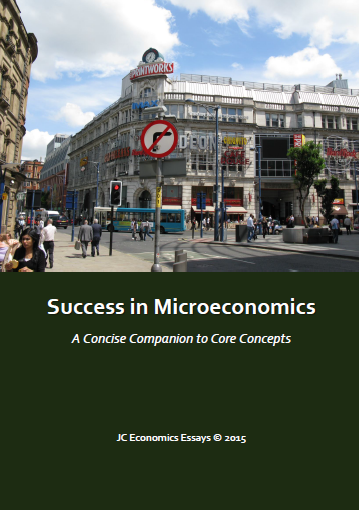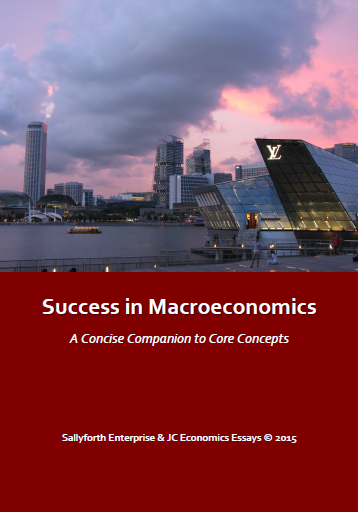A Free Trade Area (FTA) refers to a trade bloc where more than two countries agree to engage in free trade with one another while maintaining members’ own individual levels of external barriers against non-member nations; for instance, the North American Free Trade Area (NAFTA) and the ASEAN Free Trade Area (AFTA). This economics paper discusses the extent to which economic theory, in particular trade creation and trade diversion, explains Singapore’s FTAs, while arguing that non-traditional and other non-economic considerations also play a role in explaining Singapore’s FTAs.
First, how do the standard economic theories of trade creation and trade diversion explain FTAs in theory? Trade creation arises when entry into a FTA causes the production of a good to be shifted from a less efficient to a more efficient producer, while trade diversion arises when entry into a FTA causes the production of a good to be shifted from a more efficient to a less efficient producer. A country joins a FTA if it expects to benefit from overall trade creation; economic theory suggests that a country chooses whether or not to enter a FTA based on whether trade creation outweighs trade diversion. When countries join a FTA, the country gains from a rise in export demand and export prices, resulting in an improvement in the terms of trade. When there is trade creation, the country benefits from importing a good at a cost that is lower that what it could produce domestically. Hence when there is trade creation, the country benefits from joining a FTA. Conversely, when there is trade diversion, the country ends up paying more for its imports as it is now importing from a relatively more inefficient foreign producer and this worsens its terms of trade. If the rise in import prices exceed the rise in export prices, the terms of trade worsens, hence the country should not join the FTA.
However, despite standard economic analysis, since Singapore has no initial trade barriers for almost all goods and services, it experiences neither trade creation nor trade diversion, so Singapore’s decision to join an FTA must be based on other considerations other than trade creation and trade diversion, such as gaining new export markets, creating more transhipment business, attracting FDI, enhancing bilateral relations with its neighbours, and improving cooperation on security issues.
This economics paper now discusses other possible reasons that could suggest why countries choose whether or not to enter an FTA with Singapore. The first alternative reason could be that the signing of an FTA with Singapore enables the country’s exports to bypass trade barriers and gain access to a third party market that also has an FTA with Singapore. For example, China may get to enjoy tariff-free access (or at least tariff reductions) to the USA if they were to export their goods through Singapore rather than exporting their goods directly to the USA.
Secondly, Singapore may also be offering some other benefits to a FTA partner. For example, Singapore could offer to transfer knowledge and technology to the other country, and this would result in the signing of FTAs despite the fact that other countries already know that Singapore has little or no trade barriers on their goods.
Thirdly, extradition treaties and cooperation in security issues could also be part of the agreement. For instance, countries could sign FTAs in Singapore in order to ensure that wealthy tax evaders do not escape the law in their country by bringing their wealth to Singapore, and these tax evaders can be extradited back home to face trial in their home countries. Hence, political considerations also come into play alongside economic ones.
Fourth, and arguably most importantly, by negotiating a vast network of FTAs, Singapore enhances its position as a shipping hub because Singapore’s transhipment is an important aspect of the Singapore economy. Transhipment refers to the shipping of goods to an intermediate destination, on their way to their final destination, and this is a major aspect of Singapore’s maritime trade. Transhipment increases Singapore’s earnings from port and shipping related services as more ships stop at Singapore to offload the goods that are meant for re-export. The FTAs also draw in foreign investments because foreign firms need to set up processing operations here in order to meet the requirements stipulated by the Rules of Origin. Hence, transhipment operations could explain why Singapore has signed so many FTAs.
In conclusion, trade creation and trade diversion go a small way to explain why Singapore enters FTAs, and it can be argued that non-economic reasons go a longer way in explaining why Singapore enters FTAs with other countries, because Singapore’s lack of tariffs does not permit her to have trade creation, which suggests that other considerations are more important. Thus, standard economic theory based on trade creation and diversion only explains at best a small part of Singapore's FTA networks, whereas practical real world considerations like third parties bypassing trade barriers, technological transfer, political considerations, and transhipment explain why Singapore signs FTAs to a very large extent. In my view, the most important explanation for Singapore’s FTAs is the rise of globalisation, which has led to the need for third parties to bypass trade barriers, increased international mobility, and led to the rise of the importance of non-economic, political reasons for such agreements.
JC Economics Essays - H2 Economics essay on trade creation and trade diversion, and Singapore's Free Trade Agreements. This economics essay was crafted by two co-authors to explain the economics ideas and concepts of trade creation and trade diversion for an economics tutorial on economic integration (a topic closely related to international trade and globalisation). Remember to reflect on the essay as you read it. Focus on the evaluative conclusion for a moment. What is good about the evaluation, and what can be made even better? What would be a better way to craft the evaluative conclusion? Thank you for reading and cheers!



